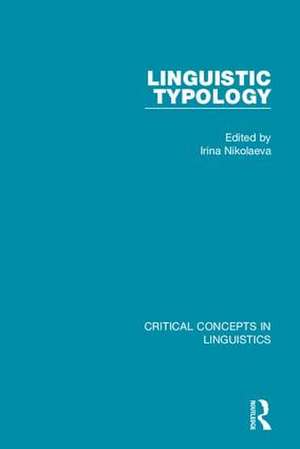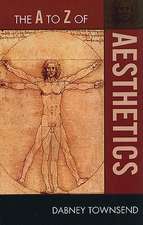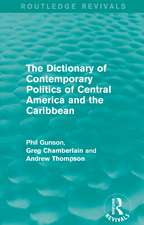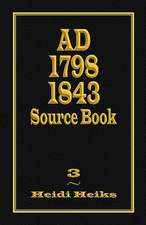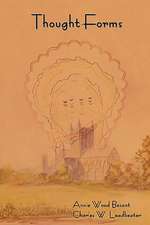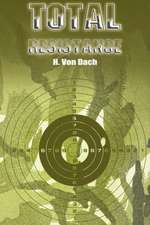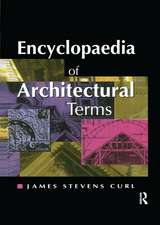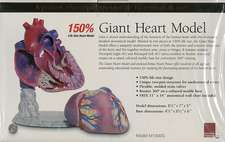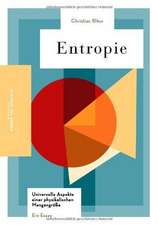Linguistic Typology: Critical Concepts in Linguistics
Editat de Irina Nikolaevaen Limba Engleză Hardback – 27 dec 2018
| Toate formatele și edițiile | Preț | Express |
|---|---|---|
| Hardback (5) | 1272.54 lei 43-57 zile | |
| Taylor & Francis – 24 dec 2018 | 1272.54 lei 43-57 zile | |
| Taylor & Francis – 24 dec 2018 | 1272.54 lei 43-57 zile | |
| Taylor & Francis – 24 dec 2018 | 1272.54 lei 43-57 zile | |
| Taylor & Francis – 24 dec 2018 | 1272.54 lei 43-57 zile | |
| Taylor & Francis – 27 dec 2018 | 6136.37 lei 43-57 zile |
Din seria Critical Concepts in Linguistics
- 34%
 Preț: 4369.55 lei
Preț: 4369.55 lei - 18%
 Preț: 1272.54 lei
Preț: 1272.54 lei - 34%
 Preț: 4805.70 lei
Preț: 4805.70 lei - 34%
 Preț: 6735.52 lei
Preț: 6735.52 lei - 34%
 Preț: 9833.67 lei
Preț: 9833.67 lei - 34%
 Preț: 7301.72 lei
Preț: 7301.72 lei - 14%
 Preț: 6742.03 lei
Preț: 6742.03 lei - 34%
 Preț: 9278.22 lei
Preț: 9278.22 lei - 34%
 Preț: 10679.71 lei
Preț: 10679.71 lei - 34%
 Preț: 7861.94 lei
Preț: 7861.94 lei - 34%
 Preț: 6742.44 lei
Preț: 6742.44 lei - 34%
 Preț: 7586.13 lei
Preț: 7586.13 lei - 34%
 Preț: 6700.27 lei
Preț: 6700.27 lei - 34%
 Preț: 6500.82 lei
Preț: 6500.82 lei - 34%
 Preț: 4373.63 lei
Preț: 4373.63 lei - 34%
 Preț: 6191.71 lei
Preț: 6191.71 lei - 34%
 Preț: 6136.37 lei
Preț: 6136.37 lei - 34%
 Preț: 6238.76 lei
Preț: 6238.76 lei - 34%
 Preț: 8986.73 lei
Preț: 8986.73 lei - 34%
 Preț: 6189.52 lei
Preț: 6189.52 lei - 34%
 Preț: 6209.19 lei
Preț: 6209.19 lei - 34%
 Preț: 4655.19 lei
Preț: 4655.19 lei - 34%
 Preț: 9272.88 lei
Preț: 9272.88 lei - 34%
 Preț: 6733.97 lei
Preț: 6733.97 lei - 34%
 Preț: 7584.39 lei
Preț: 7584.39 lei - 34%
 Preț: 6489.32 lei
Preț: 6489.32 lei - 34%
 Preț: 6741.19 lei
Preț: 6741.19 lei - 34%
 Preț: 5170.36 lei
Preț: 5170.36 lei - 34%
 Preț: 6739.17 lei
Preț: 6739.17 lei - 34%
 Preț: 5944.30 lei
Preț: 5944.30 lei - 34%
 Preț: 6735.10 lei
Preț: 6735.10 lei - 34%
 Preț: 7302.73 lei
Preț: 7302.73 lei - 34%
 Preț: 4237.71 lei
Preț: 4237.71 lei - 34%
 Preț: 4941.28 lei
Preț: 4941.28 lei - 34%
 Preț: 6136.37 lei
Preț: 6136.37 lei - 34%
 Preț: 5619.64 lei
Preț: 5619.64 lei - 34%
 Preț: 6136.37 lei
Preț: 6136.37 lei - 34%
 Preț: 8993.29 lei
Preț: 8993.29 lei - 34%
 Preț: 4932.73 lei
Preț: 4932.73 lei - 34%
 Preț: 6145.14 lei
Preț: 6145.14 lei - 34%
 Preț: 7054.47 lei
Preț: 7054.47 lei - 34%
 Preț: 4378.10 lei
Preț: 4378.10 lei - 34%
 Preț: 5496.78 lei
Preț: 5496.78 lei - 18%
 Preț: 5920.08 lei
Preț: 5920.08 lei - 34%
 Preț: 4664.16 lei
Preț: 4664.16 lei - 34%
 Preț: 5936.34 lei
Preț: 5936.34 lei
Preț: 6136.37 lei
Preț vechi: 9335.99 lei
-34% Nou
Puncte Express: 9205
Preț estimativ în valută:
1174.30€ • 1218.57$ • 981.54£
1174.30€ • 1218.57$ • 981.54£
Carte tipărită la comandă
Livrare economică 17-31 martie
Preluare comenzi: 021 569.72.76
Specificații
ISBN-13: 9781138241831
ISBN-10: 1138241830
Pagini: 1710
Ilustrații: 96
Dimensiuni: 156 x 234 mm
Greutate: 0.45 kg
Ediția:1
Editura: Taylor & Francis
Colecția Routledge
Seria Critical Concepts in Linguistics
Locul publicării:Oxford, United Kingdom
ISBN-10: 1138241830
Pagini: 1710
Ilustrații: 96
Dimensiuni: 156 x 234 mm
Greutate: 0.45 kg
Ediția:1
Editura: Taylor & Francis
Colecția Routledge
Seria Critical Concepts in Linguistics
Locul publicării:Oxford, United Kingdom
Public țintă
Postgraduate and UndergraduateCuprins
Linguistic Typology: Critical Concepts in Linguistics
Edited by Irena Nikolaeva
Volume 1: Historical and Theoretical Context
Contents
Acknowledgements
Introduction
Part 1. Precursors
Giorgio Graffi, ‘The Pioneers of Linguistic Typology: From Gabelentz to Greenberg’, in Jae Jung Song (ed.), The Oxford Handbook of Linguistic Typology, (Oxford: Oxford University Press, 2011), pp 25-42.
Part 2. Variety of current approaches
Jan Rijkhoff, ‘Linguistic Typology: A Short History and Some Current Issues’, Linguistic Typology, 5, 1, 2007, pp. 1-18.
Balthasar Bickel, ‘Typology in the 21st Century: Major Current Developments’, Linguistic Typology, 11, 2007, pp. 239-251.
Michael Cysouw, ‘New Approaches to Cluster Analysis of Typological Indices’, in R. Köhler and P. Grzbek (eds.), Exact Methods in the Study of Language and Text, (Berlin: Mouton de Gruyter, 2007), pp. 61–76
Diana Forker, ‘Conceptualization in Current Approaches of Language Typology’, Acta Linguistica Hafniensia, 48, 2016, pp. 70-84.
Part 3. Typology and theoretical linguistics
Fredrick Newmeyer, ‘Typological Evidence and Universal Grammar’, Studies in Language, 28, 2004, pp. 527-548.
Mark Baker and James McCloskey, ‘On the Relationship of Typology to Theoretical Syntax’, Linguistic Typology, 11, 2007, pp. 273-284.
Part 4. Typology and diachrony
Joan Bybee, ‘Language Change and Universals’, in R. Mairal and J. Gil (eds.), Linguistic Universals, (Cambridge: Cambridge University Press, 2006), pp. 179–194.
Paul Kiparsky, ‘Universals Constrain Change: Change Results in Typological Generalizations’, in Jeff Good (ed.), Linguistic Universals and Language Change, (Oxford: Oxford University Press, 2008), pp. 23-53.
Sonia Cristofaro, ‘Competing Motivations and Diachrony: What Evidence for what Motivations?’, in B. MacWhinney, A. Malchukov and E. Moravcsik (eds.), Competing Motivations in Grammar and Usage, (Oxford: Oxford University Press, 2014), pp. 282–298.
Part 5. Typology and other subfields of linguistics
John A. Hawkins, ‘Processing Typology and Why Psychologists Need to Know About It’, New Ideas in Psychology, 25, 2007, pp. 87–107.
Oliver Bond, ‘Language Documentation and Language Typology’, Language Documentation and Description, 7, 2010, pp. 238-261.
Harald Clahsen, ‘Contributions of Linguistic Typology to Psycholinguistics’, Linguistic Typology, 20, 3, 2016, pp. 599-614.
Nicholas Evans, ‘Typology and Coevolutionary Linguistics’, Linguistic Typology, 20, 3, 2016, pp. 505-520.
Volume 2: Methodological Issues
Contents
Acknowledgements
Part 6. Language universals and their explanation
Elena Maslova, ‘A Dynamic Approach to the Verification of Distributional Universals’, Linguistic Typology, 4, 2000, pp. 307–33.
Bernard Comrie, ‘On Explaining Language Universals’, in Michael Tomasello (ed.), The New Psychology of Language: Cognitive and Functional Approaches to Language Structure, Vol. 2, (Mahwah, NJ: Lawrence Erlbaum, 2003), pp. 195–209.
Nicholas Evans and Stephen C. Levinson, ‘The Myth of Language Universals: Language Diversity and its Importance for Cognitive Science’, Behavioural and Brain Sciences, 32, 2009, pp. 429-492.
Part 7. Implicational relations and their modelling
Simon Kirby, ‘Competing Motivations and Emergence: Explaining Implicational Hierarchies’, Linguistic Typology, 1, 1997, pp. 5-31.
Haspelmath, Martin, ‘Frequency vs. Iconicity in Explaining Grammatical Asymmetries’, Cognitive Linguistics,19, 1, 2008, pp.1-33.
Andrej Malchukov, ‘Analyzing Semantic Maps: A Multifactorial Approach’, Linguistic Discovery, 8, 1, 2010, pp. 176-198.
Part 9. Language sampling
Balthasar Bickel, ‘A Refined Sampling Procedure for Genealogical Control’, Sprachtypologie und Universalienforschung, 61, 2008, pp. 221-233.
Matti Miestamo, Dik Bakker and Antti Arppe, ‘Sampling for Variety’, Linguistic Typology, 20, 2, 2016, pp. 233-296.
Part 8. Cross-linguistic categories and cross-linguistic comparability
Martin Haspelmath, ‘Comparative Concepts and Descriptive Categories in Crosslinguistic Studies’, Language, 86, 2010, pp. 663-687.
Randy J. LaPolla, ‘On Categorization: Stick to the Facts of the Languages’, Linguistic Typology, 20, 2, 2016, pp. 365-376.
Part 10. Quantitative methods
William Croft and K. T. Poole, ‘Inferring Universals from Grammatical Variation: Multidimensional Scaling for Typological Analysis’, Theoretical Linguistics, 34, 2008, pp. 1-37.
Dik Bakker, Cecil H. Brown, Pamela Brown, Dmitry Egorov, Anthony Grant, Eric W. Holman, Robert Mailhammer, André Müller, Viveka Velupillai, and Søren Wichmann, ‘Adding Typology to Lexicostatistics: A Combined Approach to Language Classification’, Linguistic Typology, 13, 1, 2009, pp. 169-181
Balthasar Bickel, ‘Distributional Typology: Statistical Inquiries into the Dynamics of Linguistic Diversity’, in Bernd Heine and Heiko Narrog (eds.), The Oxford Handbook of Linguistic Analysis, 2nd ed., (Oxford: Oxford University Press, 2015), pp. 901-923.
Volume 3. Empirical Issues: Sounds and Words
Contents
Acknowledgements
Part 11. Phonetics
Ian Maddieson, ‘Phonetic Universals’, in W. J. Hardcastle and J. Laver, J. (eds.), The Handbook of Phonetic Sciences, (London: Blackwell Publishing, 1997), pp. 619-639.
Juliette Blevins. ‘Phonetically-based Sound Patterns: Typological Tendencies or Phonological Universals?’, in Cécile Fougeron, Barbara Kuehnert, Mariapaola Imperio and Nathalie Vallee (eds.), Laboratory Phonology 10 (Berlin: Walter de Gruyter; 2010), pp. 201-226.
Part 12. Phonology
Larry M. Hyman, ‘How (not) to do Phonological Typology: The Case of Pitch-accent’, Language Sciences, 31, 2009, pp. 213-238.
B. Bickel, K. Hildebrandt and R. Schiering, ‘The Distribution of Phonological Word Domains: A Probabilistic Typology’, in J. Grijzenhout and B. Kabak (eds.), Phonological Domains: Universals and Deviations, (Berlin: Walter de Gruyter, 2009), pp. 47-75.
Part 13. Morphological typology
Frans Plank, ‘Split Morphology: How Agglutination and Flexion Mix’, Linguistic Typology, 3, 3, 1999, pp. 279-340.
Greville G. Corbett, ‘Canonical Typology, Suppletion, and Possible Words’, Language, 83, 2007, pp. 8-42
Stephen Anderson, ‘Dimensions of Morphological Complexity’, in Matthew Baerman, Dunstan Brown, and Greville G. Corbett (eds.), Understanding and Measuring Morphological Complexity, (Oxford: Oxford University Press, 2015), pp. 11-28.
Part 14. Word classes and categorization
Andrew Spencer, ‘Towards a Typology of Mixed Categories’, in C. Orhan Orgun and Peter Sells (eds.), Morphology and the Web of Grammar: Essays in Memory of Steven G. Lapointe, (Stanford, CA: CSLI Publications, 2005), pp. 95-138.
Martin Haspelmath, ‘Escaping Ethnocentrism in the Study of Word-Class Universals’, Theoretical Linguistics, 38, 1-2, 2012, pp. 91-102.
Part 15. Grammatical features and categories
Anna Siewierska, ‘Nominal and Verbal Person Marking’, Linguistic Typology, 2, 1998, pp. 1-53.
Andrej L. Malchukov and Andrew Spencer, ‘Typology of Case Systems: Parameters of Variation', in Andrej L. Malchukov and Andrew Spencer (eds.), Oxford Handbook of Case, (Oxford: Oxford University Press, 2009), pp. 651-667.
Alexandra Y. Aikhenvald, ‘Evidentials: Their Links with other Grammatical Categories’, Linguistic Typology, 19, 2, 2015, pp. 239–277.
Sebastian Fedden and Greville G. Corbett, ‘Gender and Classifiers in Concurrent Systems: Refining the Typology of Nominal Classification’, Glossa 2, 1, 34, 2017, pp. 1-47.
Volume 4: Empirical Issues: Sentence Structure and Meaning
Contents
Acknowledgements
Part 16. Clausal syntax
Denis Creissels, ‘Direct and Indirect Explanations of Typological Regularities: The Case of Alignment Variations’, Folia Linguistica, 42, 2008, pp. 1-38.
Martin Haspelmath, ‘On S, A, P, T, and R as Comparative Concepts for Alignment Typology’, Linguistic Typology 15, 3, 2011, pp. 535–567.
( Alena Witzlack-Makarevich, Taras Zakharko, Lennart Bierkandt, Fernando Zúñiga and Balthasar Bickel, ‘Decomposing Hierarchical Alignment: Co-arguments as Conditions on Alignment and the Limits of Referential Hierarchies as Explanations in Verb Agreement’, Linguistics, 54, 3, 2016, pp. 531-561.
Part 17. Noun phrases and possessive constructions
Maria Koptjevskaja-Tamm, ‘Adnominal Possession’, in M. Haspelmath, E. König, W. Oesterreicher & W. Raible (eds.), Language Typology and Language Universals, vol. 2, (Berlin: Walter de Gruyter, 2001), pp. 960-970.
Jan Rijkhoff, ‘Descriptive and Discourse-Referential Modifiers in a Layered Model of the Noun Phrase’, Linguistics, 46, 2008, pp. 789-829.
Part 18. Complex sentences
Mark de Vries, ‘The Fall and Rise of Universals on Relativization’, Journal of Universal Language, 6, 2005, pp. 125-157.
Balthasar Bickel, ‘Capturing Particulars and Universals in Clause Linkage: A Multivariate Analysis’, in Isabelle Bril (ed.), Clause-Hierarchy and Clause-Linking: The Syntax and Pragmatics Interface (Amsterdam: John Benjamins, 2010), pp. 51-101.
Jeffrey Heath, ‘Typology of Clausal Boundary Marking Devices’, Linguistic Typology, 14, 1, 2010, pp. 127-151.
Part 19. Discourse, pragmatics, information structure,
Balthasar Bickel, ‘Referential Density in Discourse and Syntactic Typology’, Language, 79, 2003, pp. 708–736.
Daniel Büring, ‘Towards a Typology of Focus Realization’, in Malte Zimmermann and Caroline Féry (eds.), Information Structure. Theoretical, Typological, and Experimental Perspectives, (Oxford: Oxford University Press, 2009), pp 177-205.
M. Dingemanse, J. Blythe and T. Dirksmeyer, ‘Formats for Other-Initiation of Repair Across Languages: An Exercise in Pragmatic Typology’, Studies in Language, 38, 2014, pp. 5-43.
Part 20. Lexical Semantics
S. C. Levinson and S. Meira, ‘Natural Concepts' in the Spatial Topological Domain - Adpositional Meanings in Crosslinguistic Perspective: An Exercise in Semantic Typology’, Language, 79, 3, 2003, pp. 485-516.
M. Koptjevskaya-Tamm, M. Vanhove and P. Koch, ‘Typological Approaches to Lexical Semantics’, Linguistic Typology, 11, 2007, pp. 159-185.
Index
Edited by Irena Nikolaeva
Volume 1: Historical and Theoretical Context
Contents
Acknowledgements
Introduction
Part 1. Precursors
Giorgio Graffi, ‘The Pioneers of Linguistic Typology: From Gabelentz to Greenberg’, in Jae Jung Song (ed.), The Oxford Handbook of Linguistic Typology, (Oxford: Oxford University Press, 2011), pp 25-42.
Part 2. Variety of current approaches
Jan Rijkhoff, ‘Linguistic Typology: A Short History and Some Current Issues’, Linguistic Typology, 5, 1, 2007, pp. 1-18.
Balthasar Bickel, ‘Typology in the 21st Century: Major Current Developments’, Linguistic Typology, 11, 2007, pp. 239-251.
Michael Cysouw, ‘New Approaches to Cluster Analysis of Typological Indices’, in R. Köhler and P. Grzbek (eds.), Exact Methods in the Study of Language and Text, (Berlin: Mouton de Gruyter, 2007), pp. 61–76
Diana Forker, ‘Conceptualization in Current Approaches of Language Typology’, Acta Linguistica Hafniensia, 48, 2016, pp. 70-84.
Part 3. Typology and theoretical linguistics
Fredrick Newmeyer, ‘Typological Evidence and Universal Grammar’, Studies in Language, 28, 2004, pp. 527-548.
Mark Baker and James McCloskey, ‘On the Relationship of Typology to Theoretical Syntax’, Linguistic Typology, 11, 2007, pp. 273-284.
Part 4. Typology and diachrony
Joan Bybee, ‘Language Change and Universals’, in R. Mairal and J. Gil (eds.), Linguistic Universals, (Cambridge: Cambridge University Press, 2006), pp. 179–194.
Paul Kiparsky, ‘Universals Constrain Change: Change Results in Typological Generalizations’, in Jeff Good (ed.), Linguistic Universals and Language Change, (Oxford: Oxford University Press, 2008), pp. 23-53.
Sonia Cristofaro, ‘Competing Motivations and Diachrony: What Evidence for what Motivations?’, in B. MacWhinney, A. Malchukov and E. Moravcsik (eds.), Competing Motivations in Grammar and Usage, (Oxford: Oxford University Press, 2014), pp. 282–298.
Part 5. Typology and other subfields of linguistics
John A. Hawkins, ‘Processing Typology and Why Psychologists Need to Know About It’, New Ideas in Psychology, 25, 2007, pp. 87–107.
Oliver Bond, ‘Language Documentation and Language Typology’, Language Documentation and Description, 7, 2010, pp. 238-261.
Harald Clahsen, ‘Contributions of Linguistic Typology to Psycholinguistics’, Linguistic Typology, 20, 3, 2016, pp. 599-614.
Nicholas Evans, ‘Typology and Coevolutionary Linguistics’, Linguistic Typology, 20, 3, 2016, pp. 505-520.
Volume 2: Methodological Issues
Contents
Acknowledgements
Part 6. Language universals and their explanation
Elena Maslova, ‘A Dynamic Approach to the Verification of Distributional Universals’, Linguistic Typology, 4, 2000, pp. 307–33.
Bernard Comrie, ‘On Explaining Language Universals’, in Michael Tomasello (ed.), The New Psychology of Language: Cognitive and Functional Approaches to Language Structure, Vol. 2, (Mahwah, NJ: Lawrence Erlbaum, 2003), pp. 195–209.
Nicholas Evans and Stephen C. Levinson, ‘The Myth of Language Universals: Language Diversity and its Importance for Cognitive Science’, Behavioural and Brain Sciences, 32, 2009, pp. 429-492.
Part 7. Implicational relations and their modelling
Simon Kirby, ‘Competing Motivations and Emergence: Explaining Implicational Hierarchies’, Linguistic Typology, 1, 1997, pp. 5-31.
Haspelmath, Martin, ‘Frequency vs. Iconicity in Explaining Grammatical Asymmetries’, Cognitive Linguistics,19, 1, 2008, pp.1-33.
Andrej Malchukov, ‘Analyzing Semantic Maps: A Multifactorial Approach’, Linguistic Discovery, 8, 1, 2010, pp. 176-198.
Part 9. Language sampling
Balthasar Bickel, ‘A Refined Sampling Procedure for Genealogical Control’, Sprachtypologie und Universalienforschung, 61, 2008, pp. 221-233.
Matti Miestamo, Dik Bakker and Antti Arppe, ‘Sampling for Variety’, Linguistic Typology, 20, 2, 2016, pp. 233-296.
Part 8. Cross-linguistic categories and cross-linguistic comparability
Martin Haspelmath, ‘Comparative Concepts and Descriptive Categories in Crosslinguistic Studies’, Language, 86, 2010, pp. 663-687.
Randy J. LaPolla, ‘On Categorization: Stick to the Facts of the Languages’, Linguistic Typology, 20, 2, 2016, pp. 365-376.
Part 10. Quantitative methods
William Croft and K. T. Poole, ‘Inferring Universals from Grammatical Variation: Multidimensional Scaling for Typological Analysis’, Theoretical Linguistics, 34, 2008, pp. 1-37.
Dik Bakker, Cecil H. Brown, Pamela Brown, Dmitry Egorov, Anthony Grant, Eric W. Holman, Robert Mailhammer, André Müller, Viveka Velupillai, and Søren Wichmann, ‘Adding Typology to Lexicostatistics: A Combined Approach to Language Classification’, Linguistic Typology, 13, 1, 2009, pp. 169-181
Balthasar Bickel, ‘Distributional Typology: Statistical Inquiries into the Dynamics of Linguistic Diversity’, in Bernd Heine and Heiko Narrog (eds.), The Oxford Handbook of Linguistic Analysis, 2nd ed., (Oxford: Oxford University Press, 2015), pp. 901-923.
Volume 3. Empirical Issues: Sounds and Words
Contents
Acknowledgements
Part 11. Phonetics
Ian Maddieson, ‘Phonetic Universals’, in W. J. Hardcastle and J. Laver, J. (eds.), The Handbook of Phonetic Sciences, (London: Blackwell Publishing, 1997), pp. 619-639.
Juliette Blevins. ‘Phonetically-based Sound Patterns: Typological Tendencies or Phonological Universals?’, in Cécile Fougeron, Barbara Kuehnert, Mariapaola Imperio and Nathalie Vallee (eds.), Laboratory Phonology 10 (Berlin: Walter de Gruyter; 2010), pp. 201-226.
Part 12. Phonology
Larry M. Hyman, ‘How (not) to do Phonological Typology: The Case of Pitch-accent’, Language Sciences, 31, 2009, pp. 213-238.
B. Bickel, K. Hildebrandt and R. Schiering, ‘The Distribution of Phonological Word Domains: A Probabilistic Typology’, in J. Grijzenhout and B. Kabak (eds.), Phonological Domains: Universals and Deviations, (Berlin: Walter de Gruyter, 2009), pp. 47-75.
Part 13. Morphological typology
Frans Plank, ‘Split Morphology: How Agglutination and Flexion Mix’, Linguistic Typology, 3, 3, 1999, pp. 279-340.
Greville G. Corbett, ‘Canonical Typology, Suppletion, and Possible Words’, Language, 83, 2007, pp. 8-42
Stephen Anderson, ‘Dimensions of Morphological Complexity’, in Matthew Baerman, Dunstan Brown, and Greville G. Corbett (eds.), Understanding and Measuring Morphological Complexity, (Oxford: Oxford University Press, 2015), pp. 11-28.
Part 14. Word classes and categorization
Andrew Spencer, ‘Towards a Typology of Mixed Categories’, in C. Orhan Orgun and Peter Sells (eds.), Morphology and the Web of Grammar: Essays in Memory of Steven G. Lapointe, (Stanford, CA: CSLI Publications, 2005), pp. 95-138.
Martin Haspelmath, ‘Escaping Ethnocentrism in the Study of Word-Class Universals’, Theoretical Linguistics, 38, 1-2, 2012, pp. 91-102.
Part 15. Grammatical features and categories
Anna Siewierska, ‘Nominal and Verbal Person Marking’, Linguistic Typology, 2, 1998, pp. 1-53.
Andrej L. Malchukov and Andrew Spencer, ‘Typology of Case Systems: Parameters of Variation', in Andrej L. Malchukov and Andrew Spencer (eds.), Oxford Handbook of Case, (Oxford: Oxford University Press, 2009), pp. 651-667.
Alexandra Y. Aikhenvald, ‘Evidentials: Their Links with other Grammatical Categories’, Linguistic Typology, 19, 2, 2015, pp. 239–277.
Sebastian Fedden and Greville G. Corbett, ‘Gender and Classifiers in Concurrent Systems: Refining the Typology of Nominal Classification’, Glossa 2, 1, 34, 2017, pp. 1-47.
Volume 4: Empirical Issues: Sentence Structure and Meaning
Contents
Acknowledgements
Part 16. Clausal syntax
Denis Creissels, ‘Direct and Indirect Explanations of Typological Regularities: The Case of Alignment Variations’, Folia Linguistica, 42, 2008, pp. 1-38.
Martin Haspelmath, ‘On S, A, P, T, and R as Comparative Concepts for Alignment Typology’, Linguistic Typology 15, 3, 2011, pp. 535–567.
( Alena Witzlack-Makarevich, Taras Zakharko, Lennart Bierkandt, Fernando Zúñiga and Balthasar Bickel, ‘Decomposing Hierarchical Alignment: Co-arguments as Conditions on Alignment and the Limits of Referential Hierarchies as Explanations in Verb Agreement’, Linguistics, 54, 3, 2016, pp. 531-561.
Part 17. Noun phrases and possessive constructions
Maria Koptjevskaja-Tamm, ‘Adnominal Possession’, in M. Haspelmath, E. König, W. Oesterreicher & W. Raible (eds.), Language Typology and Language Universals, vol. 2, (Berlin: Walter de Gruyter, 2001), pp. 960-970.
Jan Rijkhoff, ‘Descriptive and Discourse-Referential Modifiers in a Layered Model of the Noun Phrase’, Linguistics, 46, 2008, pp. 789-829.
Part 18. Complex sentences
Mark de Vries, ‘The Fall and Rise of Universals on Relativization’, Journal of Universal Language, 6, 2005, pp. 125-157.
Balthasar Bickel, ‘Capturing Particulars and Universals in Clause Linkage: A Multivariate Analysis’, in Isabelle Bril (ed.), Clause-Hierarchy and Clause-Linking: The Syntax and Pragmatics Interface (Amsterdam: John Benjamins, 2010), pp. 51-101.
Jeffrey Heath, ‘Typology of Clausal Boundary Marking Devices’, Linguistic Typology, 14, 1, 2010, pp. 127-151.
Part 19. Discourse, pragmatics, information structure,
Balthasar Bickel, ‘Referential Density in Discourse and Syntactic Typology’, Language, 79, 2003, pp. 708–736.
Daniel Büring, ‘Towards a Typology of Focus Realization’, in Malte Zimmermann and Caroline Féry (eds.), Information Structure. Theoretical, Typological, and Experimental Perspectives, (Oxford: Oxford University Press, 2009), pp 177-205.
M. Dingemanse, J. Blythe and T. Dirksmeyer, ‘Formats for Other-Initiation of Repair Across Languages: An Exercise in Pragmatic Typology’, Studies in Language, 38, 2014, pp. 5-43.
Part 20. Lexical Semantics
S. C. Levinson and S. Meira, ‘Natural Concepts' in the Spatial Topological Domain - Adpositional Meanings in Crosslinguistic Perspective: An Exercise in Semantic Typology’, Language, 79, 3, 2003, pp. 485-516.
M. Koptjevskaya-Tamm, M. Vanhove and P. Koch, ‘Typological Approaches to Lexical Semantics’, Linguistic Typology, 11, 2007, pp. 159-185.
Index
Notă biografică
Irina Nikolaeva is Professor of Linguistics at the School of Oriental and African Studies University of London, UK
Descriere
This new four volume collection on Linguistic Typology will be an essential source of reference for linguists of all theoretical convictions. It will provide a state-of-the-art overview of work on linguistic typology, its history, its methodology, theoretical foundations and major achievements.
